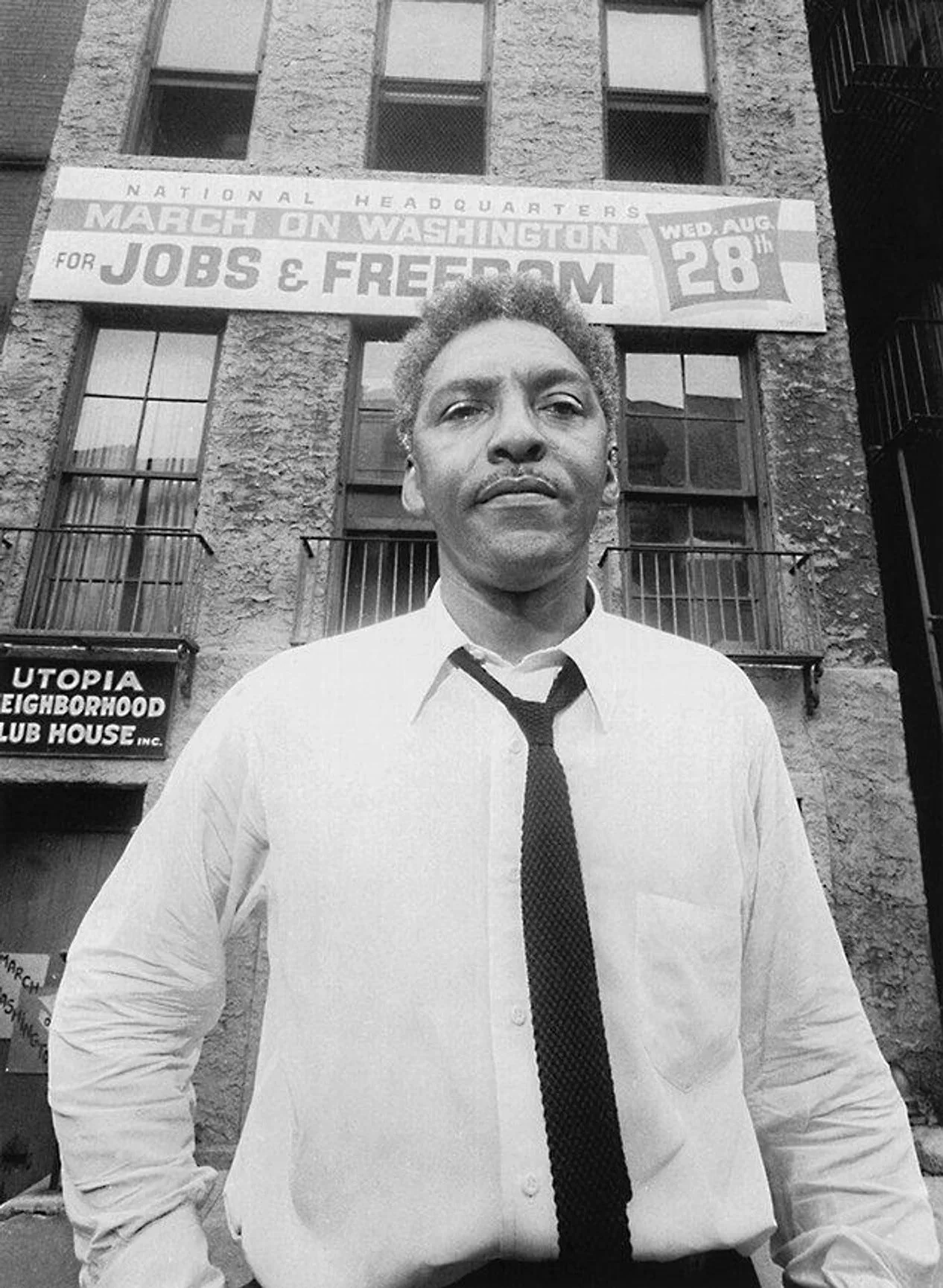Bayard Rustin stands at the microphone on the steps of the Lincoln Memorial, rallying the crowd and issuing crucial instructions that would ensure the March on Washington’s peaceful and powerful impact. As the architect behind the day’s logistics and strategy, Rustin’s clear presence at the podium marks the culmination of months of tireless organizing—uniting diverse groups into a single, disciplined force for justice. The moment crackles with anticipation, as Rustin energizes marchers and steers the day’s events with a steady, visionary hand.
Bayard Rustin Prepares for the March on Washington, August 27, 1963
Rustin is captured in an intense moment of concentration, his attention fixed on the immense responsibilities before him as the primary architect of the March on Washington. The weight of the moment is visible in his expression, as he mentally runs through final plans and prepares to marshal thousands of people from across the country into a unified, peaceful demonstration. On this day, Rustin troubleshoots last-minute obstacles, encourages weary volunteers, and sharpens the vision that would, within twenty-four hours, change the course of American history.
With the March on Washington Less Than a Month Away, Rustin Poses in Front of the National Headquarters Office (August 1, 1963)
Bayard Rustin stands outside the National Headquarters for the March on Washington for Jobs and Freedom, located on West 130th Street in New York City, just weeks before the historic demonstration. The iconic headquarters sign looms overhead, signaling the urgency and scale of preparations underway for one of the most pivotal events in American civil rights history.
This moment documents the relentless groundwork of movement organizing that preceded the landmark demonstration on August 28, 1963. At this time, Rustin and fellow strategists worked from New York’s Harlem—far from the spotlight—to coordinate transportation, logistics, and coalition-building for a multi-racial march with unprecedented scope. Behind the scenes, Rustin navigated deep tensions within the civil rights movement, including doubts about his visibility due to homophobia and red-baiting, as well as skepticism from activists who questioned whether mainstream, nonviolent organizing could confront entrenched Southern resistance. The image stands as testament to the labor, negotiation, and resilience required to transform a local mobilization hub into the strategic nerve center of one of the largest mass protests in U.S. history.
Advocate.com Editors. 2023. “Bayard Rustin’s Life and Civil Rights Legacy in Photos.” Advocate.Com, November 17, 2023. https://www.advocate.com/slideshow/2019/1/21/bayard-rustins-life-and-civil-rights-legacy-photos#rebelltitem3.


